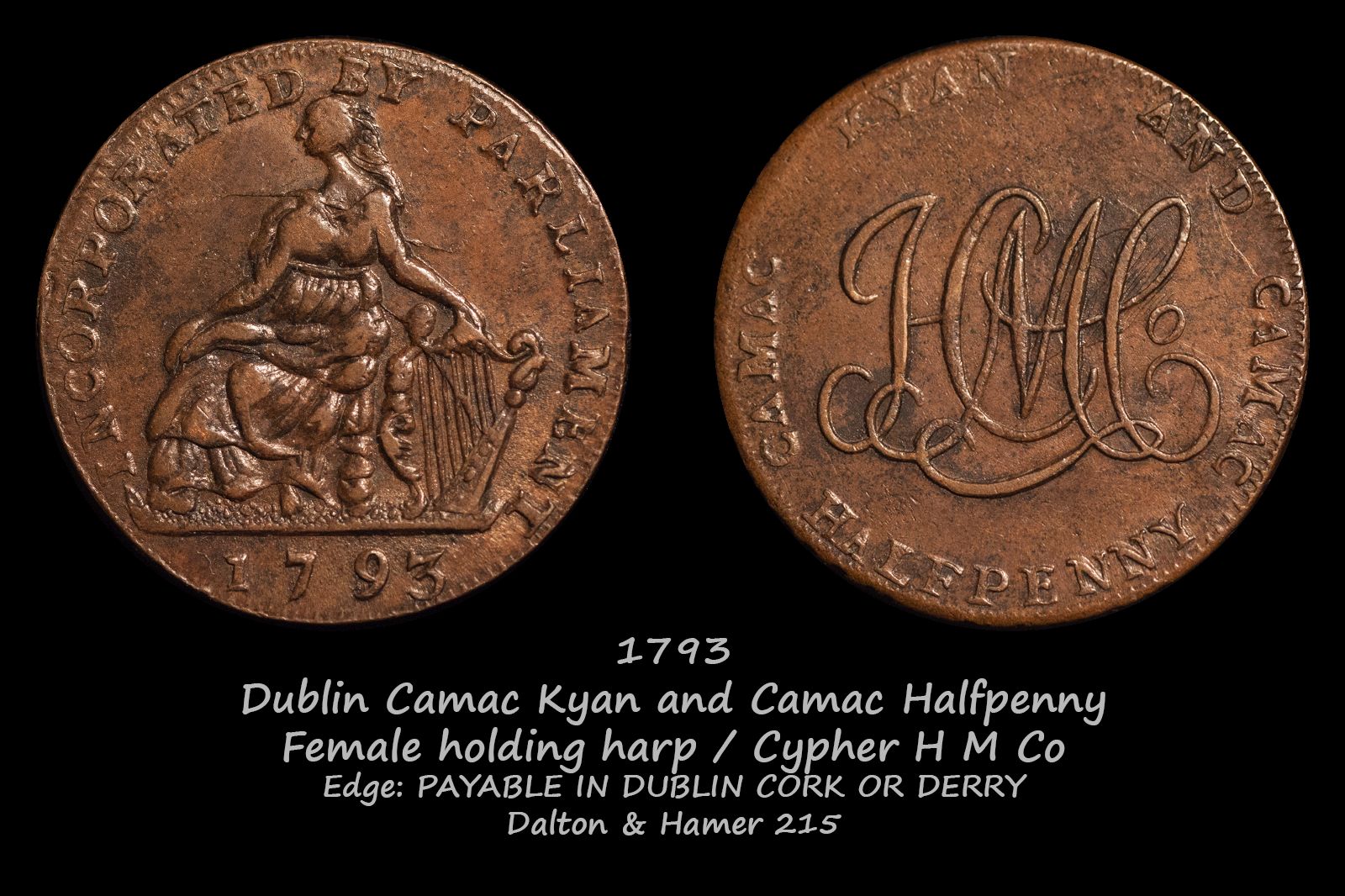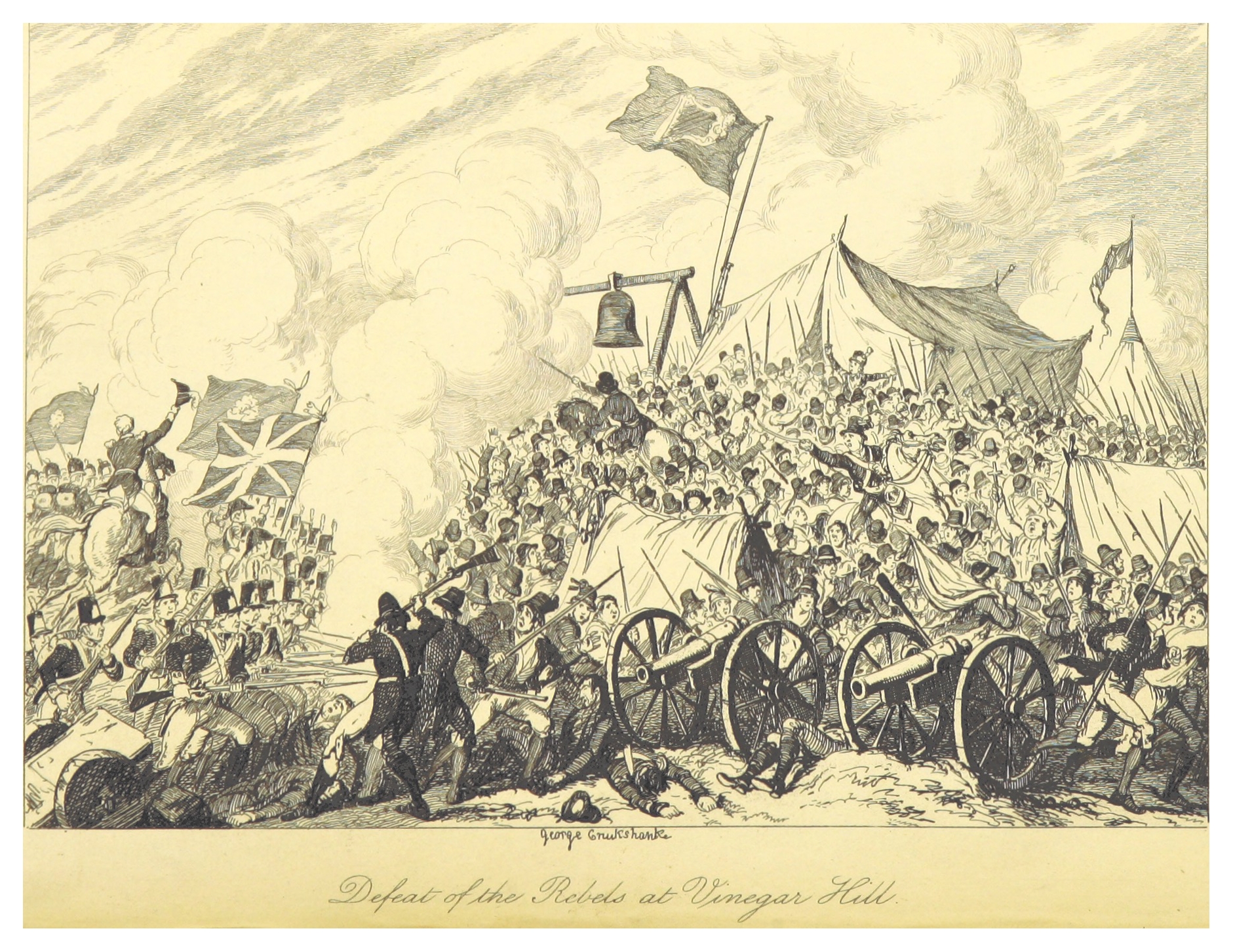
Online collections
monedastodas.com
All collections » Tokens » "Camac Kyan and Camac"
The obverse depicts a seated Hibernia holding a harp in her left hand. Circle legend: “ INCORPORATED BY PARLIAMENT ”.

The reverse side features the " HMCo " monogram. Circle legend: “ CAMAC KYAN AND CAMAC HALFPENNY ”.
Hibernia is the classical Latin name for Ireland, literally meaning "land of winter". Claudius Ptolemy, in his Geographia (AD 150), names the island Iouerníā , which was derived from the Greek name Īweriū , from which the Irish names Ériu and Éire also arose .
In the late 17th century, Adam Kyan came into possession of the Ballymurtag estate through his marriage to Mary Howard, whose family later became the Earls of Wicklow. The Kyan family were descendants of Donal O'Cahan, the last chief of Derry, who died about 1598. John Howard Kyan took possession of the east and west Avoca Valley in 1766 and founded the Hibernian Mine Company (HMC) in 1780. In June 1787, John Howard Kyan contracted Charles Roe of Macclesfield to mine all of his mines for 41 years. Charles Rowe and Associates were founders of the United Irish Mining Company (AIMC). In 1790 they returned the mines at Ballymurtag to John Howard Kyan, who took the Turner brothers and John Camac as partners.
HMC was established by Act of Parliament in 1792, at the same time the first halfpenny tokens were issued. A series of tokens "Camac Kyan and Camac" was issued from 1792 to 1799 and has more than a hundred varieties. Also in 1792, a series of "Turner Camac Chairman" tokens was issued. It is also known about the release of two variants of tokens denominated in pennies, but they are very rare. Probably most of the HMC tokens were engraved and minted in Dublin. The number of issued HMC tokens was so large that they largely replaced royal coins and were known as “Camacs” for many years.
Violent rivalry began to grow between the Irish-owned HMC in western Avoca and the British-controlled AIMC in eastern Avoca. It reached its peak during the Irish civil unrest that led to the unsuccessful Irish Rebellion of 1798. Prior to the uprising, both companies raised their own militia and provided them with uniforms and weapons. HMC owners and workers were suspected of expressing sympathy for the outlawed Republican group the United Irishmen and their allegiance to the Crown was in question. During the uprising, mining in the mines was suspended. As a result of the uprising, the peasant rebels were defeated by British forces, including the leadership of the AIMC, who were subsequently rewarded for their "energetic and sensible behavior". John Howard's brother Kyan Esmond was executed for his part in the rebellion.
 Defeat
of the Rebels at Vinegar Hill. George Cruikshank, 1854.
Defeat
of the Rebels at Vinegar Hill. George Cruikshank, 1854.In 1798, the HMC partners lost their nerve and John Camack began legal proceedings against John Howard Kyan. Legal fees and the death of John Howard Kyan in 1801 caused the Ballymurtag mines to be abandoned until 1813. Howard Kyan's son, named John Howard Kyan Jr. moved to England where he invented the process of preserving wood in mercury preparations, which is now known as "kyanisation".
Edge inscription: “PAYABLE IN DUBLIN CORK OR DERRY”.